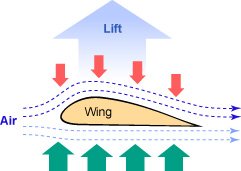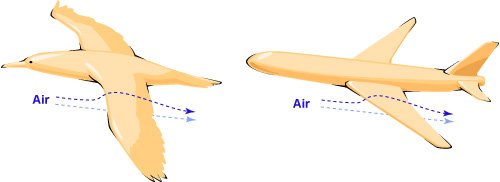If you tried the paper activity from the front of this article, you might have been surprised by what happened. In most cases a person would think the paper would go down and not lift up when they blow air across the top.
It may not be what you would expect, but it is what birds and planes do to lift off the ground and fly. Blowing faster-moving air above the sheet paper lowered the air pressure above the paper. Now the air pressure below the paper is higher and creates lift. Lift does exactly what it sounds like; it lifts objects off the ground when everything is just right.

How do you make air move faster?
We blew air over the top of the sheet of paper to create the lower pressure. You cannot do that for birds and planes. Instead, the wing of both birds and planes are shaped so that air passing over the top has to travel a longer distance and so it has to speed up as it goes over the top of the wing. This creates the difference in pressure above and below the wing.
How do you get the air to move over a wing?

Getting the air to move over and under the wing also requires the wing to be moving. This is called thrust. Thrust is created when birds flap their wings using their strong breast muscles. Planes use another method for thrust. They use engines. These can be either propeller or jet engines. With both birds and planes, thrust is the other part of creating lift and the ability to fly. So the shape of the wing and the ability to move it through the air are the two things needed for bird and plane flight.
bird-plane wing lift
Birds use their strong breast muscles to flap their wings and give them the thrust to move throught the air and fly. In a way, birds use a swimming motion to get the lift needed to fly. Plane wings have a similar shape as bird wings, but instead of flapping their wings, we use engines to thrust them into the air and create the lift needed to fly.